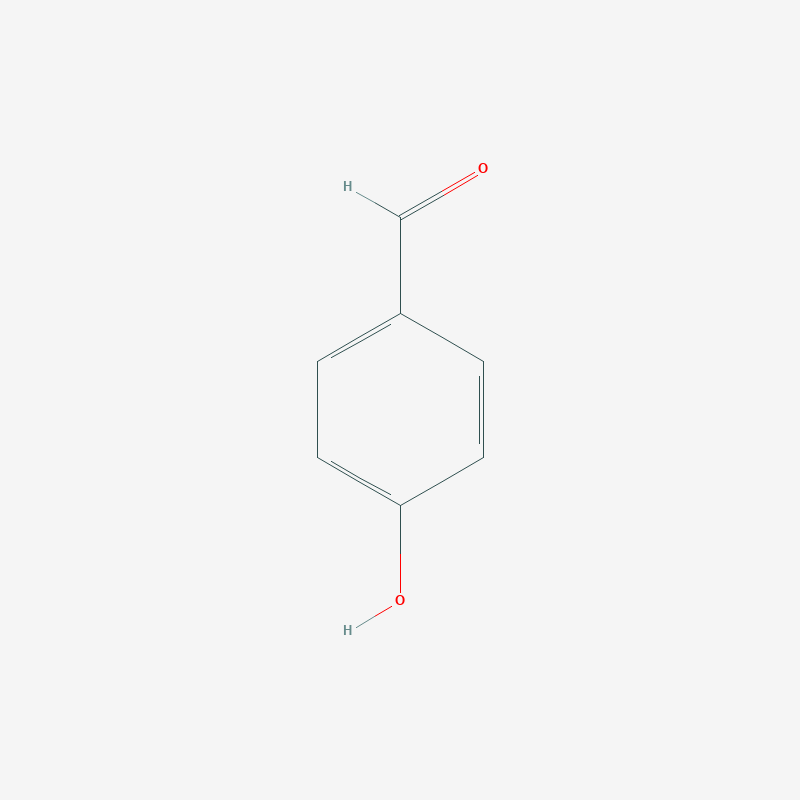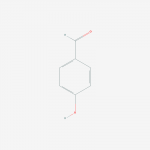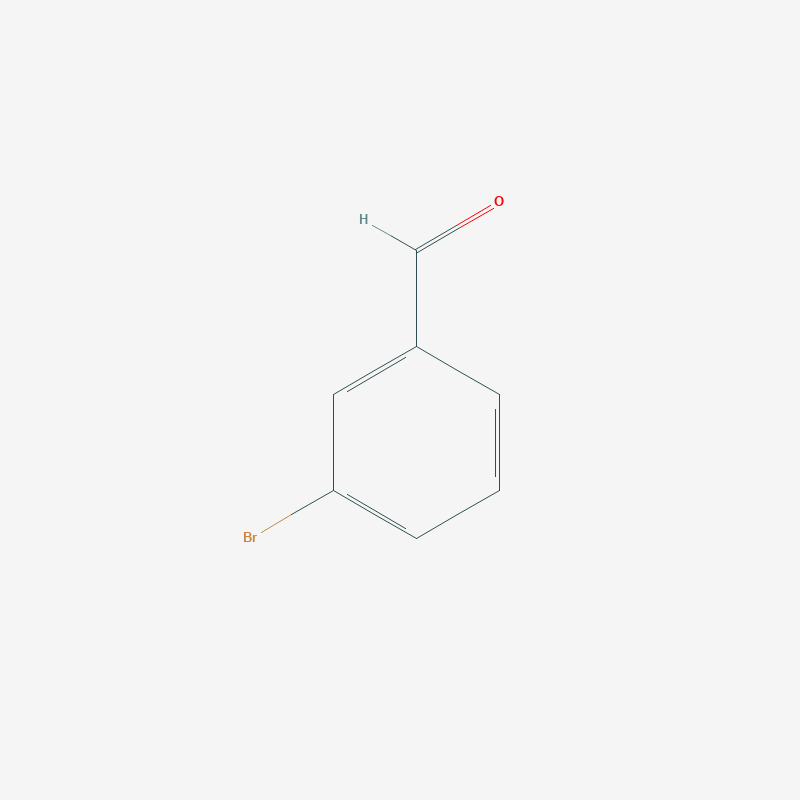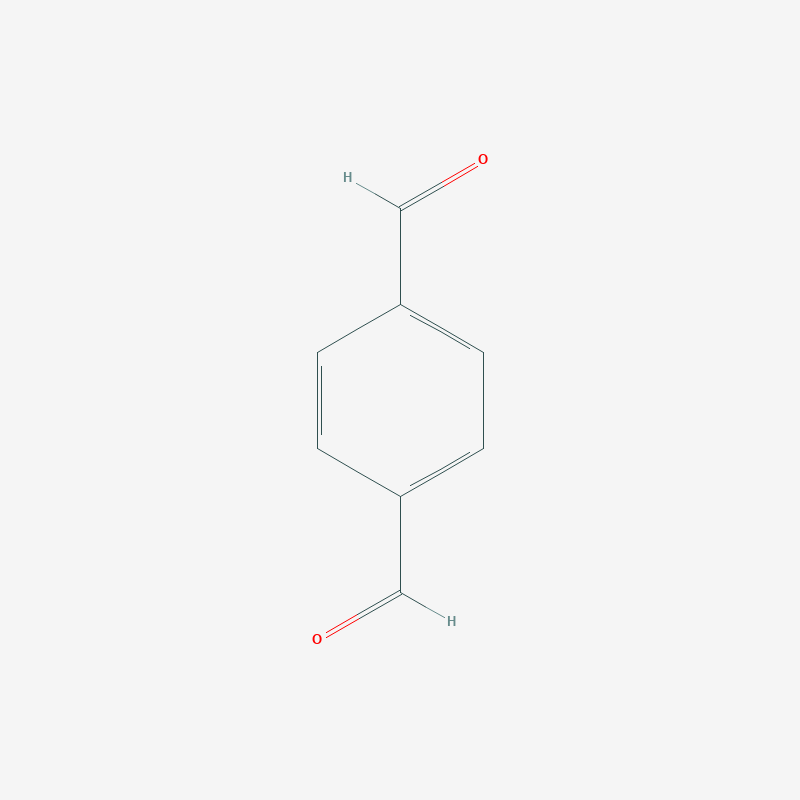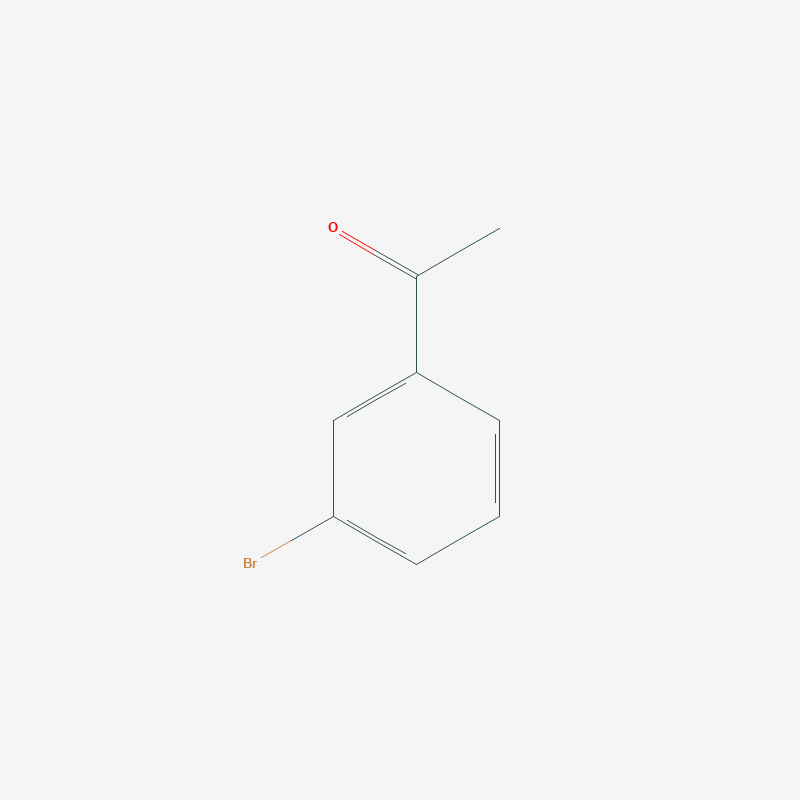| Purity / Analysis Method | >98.0%(GC) |
| Molecular Formula / Molecular Weight | C7H6O2 = 122.12 |
| Physical State (20 deg.C) | Solid |
| Store Under Inert Gas | Store under inert gas |
| Condition to Avoid | Air Sensitive |
| CAS RN | 123-08-0 |
| PubChem Substance ID | 87570628 |
| Merck Index (14) | 4811 |
| MDL Number | MFCD00006939 |
4-Hydroxybenzaldehyde
Purity : >98.0%(GC)
CAS No.: 123-08-0
EC No.: 204-599-1
EC Name: 4-hydroxybenzaldehyde
ECHA Name: 4-hydroxybenzaldehyde
Synonyms:
4-hydroxybenzaldehyde
p-Hydroxybenzaldehyde
123-08-0
4-Formylphenol
p-Formylphenol
Enquire For Best Price
For all our chemicals TDS, MSDS and CoA are available upon request
Specification & Properties
Specifications:
| Appearance | White to Gray to Brown powder to crystal |
| Purity(GC) | min. 98.0 % |
| Melting point | 116.0 to 119.0 deg.C |
Properties:
| Melting Point | 117 deg.C |
| Solubility in water | Practically insoluble |
| Degree of solubility in water | 13.8 g/l 30.5 deg.C |
| Solubility (very soluble in) | Ether,Alcohol,Acetone |
Safety & Regulations
Safety Information:
| Signal Word | Warning |
| Hazard Statements | H315 : Causes skin irritation. H319 : Causes serious eye irritation. |
| Precautionary Statements | P264 : Wash skin thoroughly after handling. P280 : Wear protective gloves/ eye protection/ face protection. P302 + P352 : IF ON SKIN: Wash with plenty of water. P337 + P313 : If eye irritation persists: Get medical advice/ attention. P305 + P351 + P338 : IF IN EYES: Rinse cautiously with water for several minutes. Remove contact lenses, if present and easy to do. Continue rinsing. P362 + P364 : Take off contaminated clothing and wash it before reuse. P332 + P313 : If skin irritation occurs: Get medical advice/ attention. |
Related Laws:
| RTECS# | CU6475000 |
Transport Information:
Hazard Classification:
Danger!
According to the classification provided by companies to ECHA in REACH registrations this substance
causes serious eye damage,
causes skin irritation and
may cause respiratory irritation.
